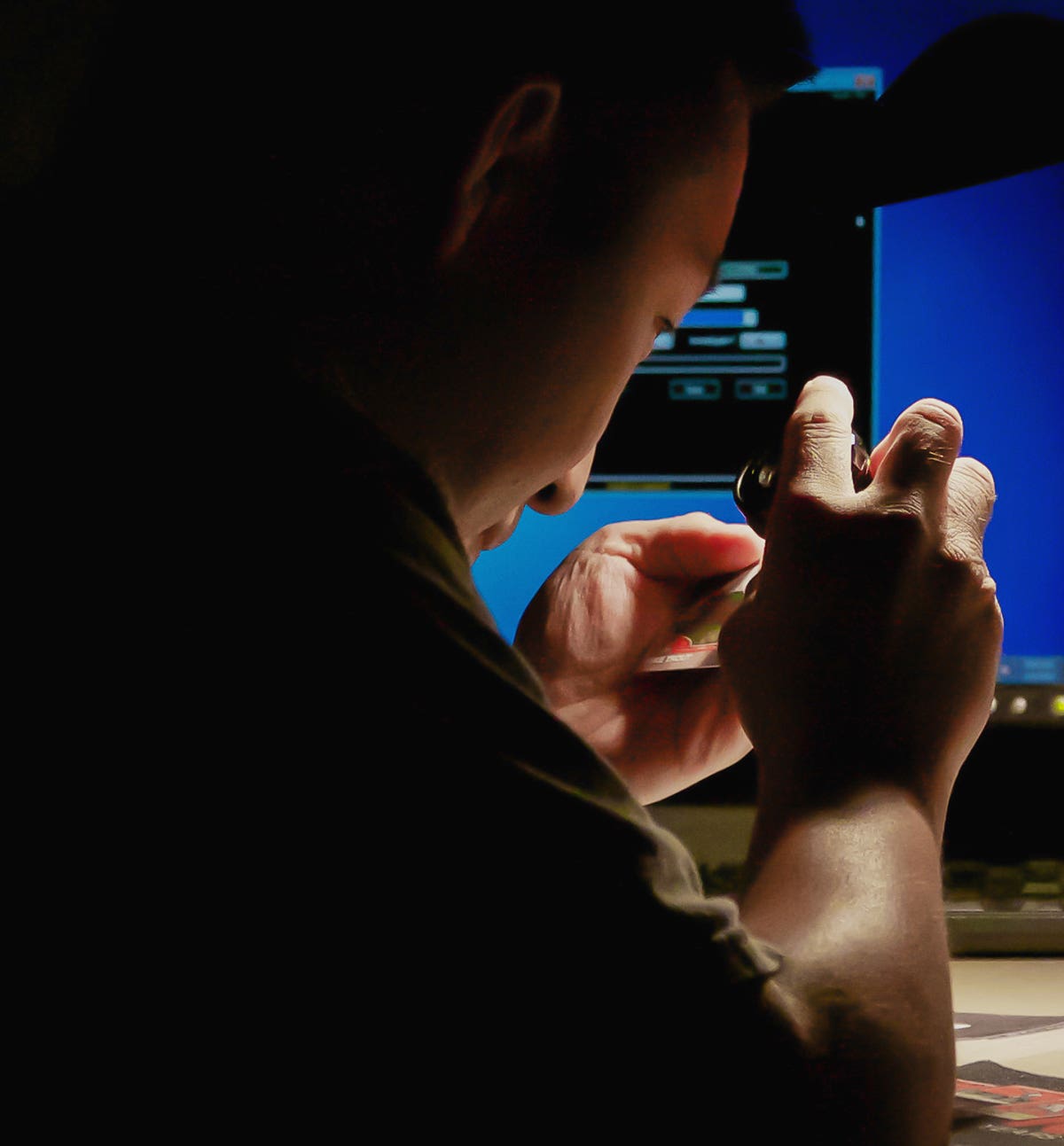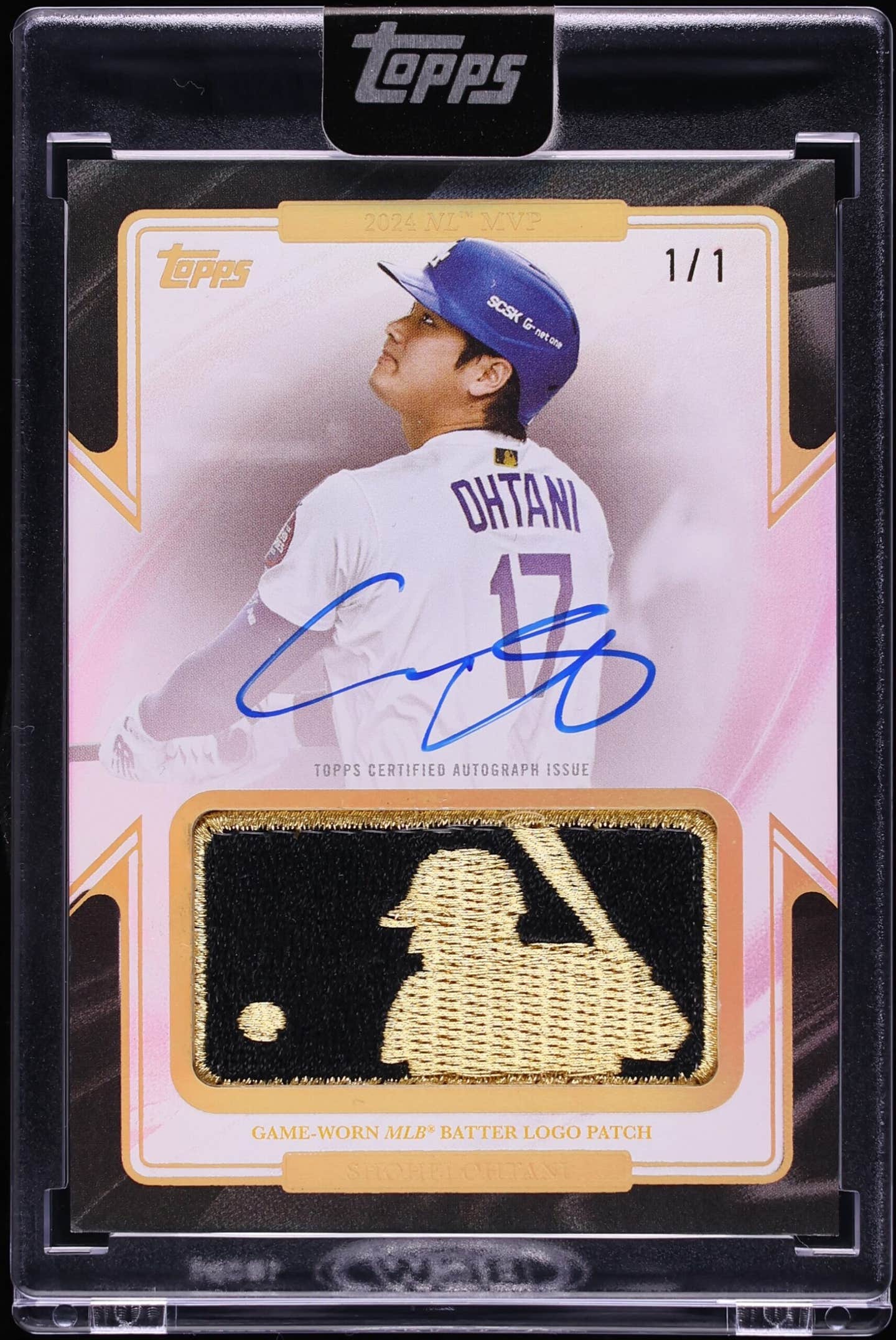
Sports Card Dealers
NIGHT MOVES: How Trade Nights became fun, popular after-hours events for card collectors
One of the ornate ballrooms inside the ground floor of the Embassy Suites by Hilton in the Chicago suburb of Rosemont was bustling with activity.
Collectors packed the room, many of them lugging around black or silver cases loaded with slabbed cards. Others were laying their cards on the large round tables eager to trade or make a deal.
This get-together, advertised ahead of time as a “Trade Night” featuring Hall of Fame outfielder Andre Dawson, was an extension of the opening day of the Chicago Sports Spectacular June 16-18. An entire afternoon of perusing tables and lining up for autographs at the Donald E. Stephens Convention Center across the street had given way to an even more casual setting featuring some 100 collectors, their cards and a few beers.
Most collectors can recall childhood memories when recess was a time for trading cards. These days, many have continued this tradition of selling and trading during Trade Nights. The gatherings, once-impromptu during regional card shows, were most often held in hotel lobbies and parking lots. These days, as more people return to the hobby, Trade Nights have grown into full-fledged events with sponsors.
“I like it. This is the kind of thing you see over the Internet,” said Dawson, who collected baseball memorabilia and cards in the late 1980s. “This is face to face, more trustworthy. There’s also a lot of younger people here and that’s where the industry should be today. This is the future.”
This explosion in Trade Nights at card shows — and even cards shops — across the country over the past year may also be because collectors are looking for more ways to socialize as well as to trade, buy and sell in person after the pandemic forced many to isolate for two years. While Trade Nights used to happen spontaneously by collectors prior to COVID-19, the ones that have taken hold recently are well-run and tied to show organizers.
This extension of shows — some Trade Nights taking place on the convention floor itself after hours — has divided dealers and collectors as the hobby continues to see a boom. The National Sports Collectors Convention will have an “official” Trade Night this year at the five-day show in Atlantic City.
“These Trade Nights are here to stay. People are walking around with tens of thousands of dollars in their cases looking to buy, sell or trade and they need more places to do that,” said Ryan Nolan, a collector who attended 52 shows in 2021. “It’s crazy to see how much it's grown in just a few years. I think this is the start of a revolution for card shows.”
Some dealers only give 50 to 60 percent comps because they have overhead costs, Nolan said. At a Trade Night, you could get 80 to 90 percent from buyers.
“There’s more money to be made,” Nolan added.
SOMETHING FOR EVERYONE
Even smaller shows, ones with 100 tables, are getting in on the Trade Night act. Like many things associated with card collecting, not everyone loves Trade Nights. The reasons vary, depending on who you talk with, and most often are tied to economics, time constraints and even generational.
Nolan, co-author of the book “Spotting Fakes: Examining the Top 50 Fake Sports Cards,” said he’s observed the boom in Trade Nights at shows and has really enjoyed going to them.
“I see the perspective from dealers who don’t like Trade Nights. But dealers benefit from them as well. Trade Nights are in the evening after a show has gone on all day,” he said. “The dealers get first dibs at people’s cards since they see them in the morning. I get some of the complaints. They want the inventory to go to them.”
Nolan has observed a generational shift in how some view Trade Nights, saying vintage card dealers and collectors often shun them, while millennials and teens can’t get enough.
“It’s much more the modern stuff. Vintage dealers tend to have their own friend groups and often organize dinners while together at shows,” he added. “In that sense, these Trade Nights are for a younger crowd with people carrying cases and wheeling and dealing. The modern collector, and many people who only recently have come into the hobby, aren’t so attached to their cards like older collectors. For that reason, these Trade Nights are perfect for that younger demo who likes to stay up late and continue to trade.”
For example, at the Dallas Card Show, held every two months, Trade Nights are typically held in two rooms — an overflow room adjacent to where the show is held and nearby hallways.
“The best Trade Night, by far, is in Dallas. It’s been ingrained in their show culture,” Ryan said. “The National, as well, has always been fun because it draws so many people from all over the country and a nice mix of different cards.”
As is the case at most shows, there was plenty of trading at the spring edition of the Toronto Sport Card and Memorabilia Expo as well as buying and selling off site before and after the show’s official hours. Collectors gathered outside the parking lot of The International Centre before it opened during the four-day event in June and in the evening after the show was over in the lobby of the nearby NU Hotel and a local Tim Horton’s.
There were two Trade Nights that were promoted during the show. The first, which took place on the show’s second day at the Four Points by Sheraton, was free to attend and sponsored by Relikks Cards & Collectibles, a local card store, and CSC Marketplace. The second, held the following day, was run by Mintink Trading Cards in conjunction with the Expo. It cost $20 to attend and featured a DJ as well as drinks and snacks.
“We worked hard to bring the community together and there is just no better way than live events,” said John Amendola, CEO of Mintink Trading Cards. “It’s awesome seeing people experience meeting face to face after, in some instances, spending months or years chatting in [virtual] rooms. Of course, from a business point of view, the return on investment on events always comes later. We’re a big believer in that process.”
Amendola said some 300 people attended the Trade Night. He said it was so successful that he’s already planning another one that’s “bigger and better” for the next Expo come November.
“It’s a more intimate setting and you’re allowing consumers to deal amongst themselves and not with dealers,” he said. “That’s huge!”
At the National Sports Collectors Convention, Trade Nights have been a staple since 2016 in Atlantic City and was formed when Instagram users gave people something to do in the evenings and a way to hang out instead of sitting in their hotel rooms.
Ryan Johnson, owner of Card Collector 2 in Grove City, Ohio, was involved in that first Trade Night. In a YouTube video, he explained that 25 to 30 people showed up for the first night ever.
“Not many people showed up,” he said in the video. “Then word quickly spread and the next night there were 50 to 60 people. Then the third night it was 100 people. It got bigger.”
A year later, at The National held in Chicago, Johnson said it was “wall to wall people.”
Johnson, who has run the National’s Trade Nights since 2018, said he decided to bring in sponsors and give attendees prizes as part of the event. As a YouTuber and someone very active on Instagram, Johnson was able to grow the event by bringing PSA, Upper Deck and Panini, among others, on board.
“Lots of people won a lot of free stuff thanks to these companies,” he said.
In general, shows are about socializing — something that was lacking from the hobby during the pandemic — and Trade Nights help to do just that. After Fenway Park in Boston held a card show this past spring, other stadiums also got into the card and Trade Night act.
Red Bull Arena, just outside New York City, hosted a Trade Night before a Major League Soccer game between the New York Red Bulls and Toronto FC. The event was hosted in conjunction with Topps and Bleeker Trading, a card shop in New York City. The event also included a free promo pack handed out to the first 10,000 fans who attended the game.
“I agree on the socializing aspect. At a show, everyone is crammed in,” Nolan said. “At a Trade Night, it’s more casual and people can sit or stand around and talk while making trades.”
Back in Chicago, Dawson made the rounds inside the ballroom, walking past tables loaded with cards. The occasional fan would come by and shake his hand and ask to take a photo. Dawson obliged with a smile every time.
“I grew up buying baseball cards. Back then, I bought them to see what teams players were on and to read their stats on the back,” Dawson recalled. “It wasn’t until years later, as a player, that I started collecting. These kids today here know what they’re doing. I am amazed at how smart they are about the value of cards. They know exactly how much their cards are worth. They are very savvy.”
Clemente Lisi








